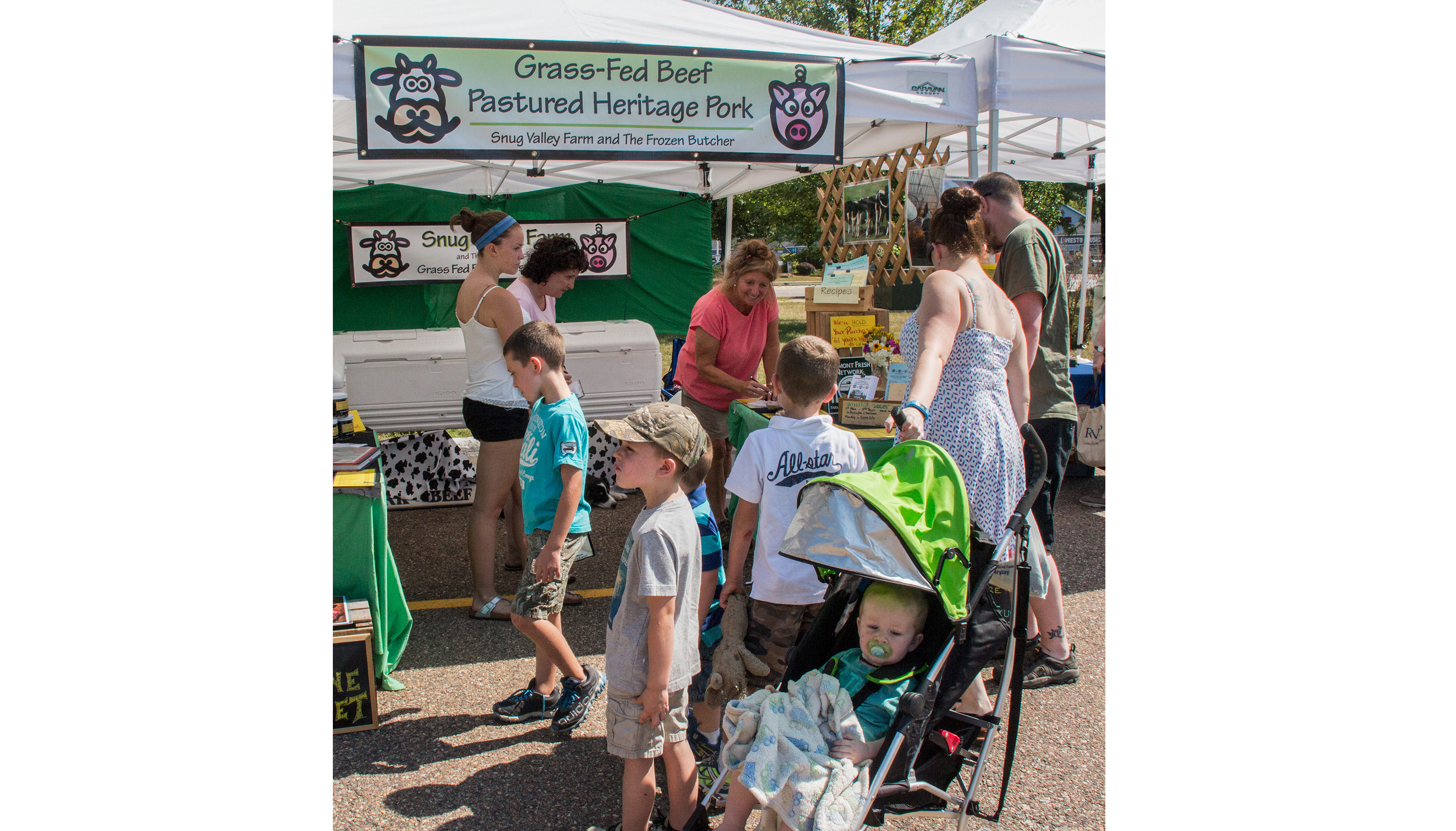Hamburgers
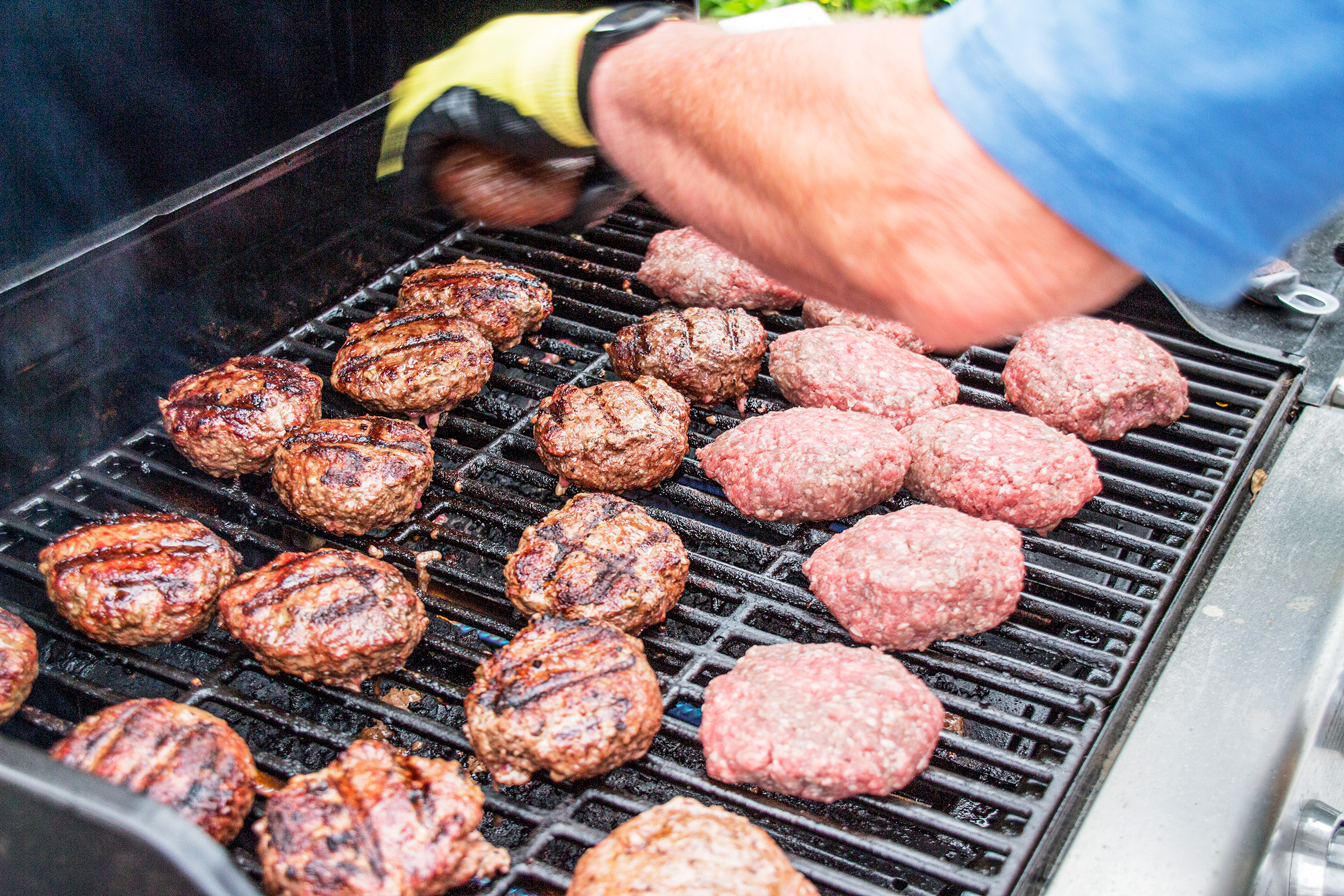
All living things die, some by old age, others by disease, starvation, or predation. Meat animals die by being slaughtered. Nancy and Helm have selected a small slaughterhouse that is near their farm and owned by a brother and sister. Small slaughterhouses are able to treat animals with compassion and make the end of animals' lives as stress-free and painless as possible.
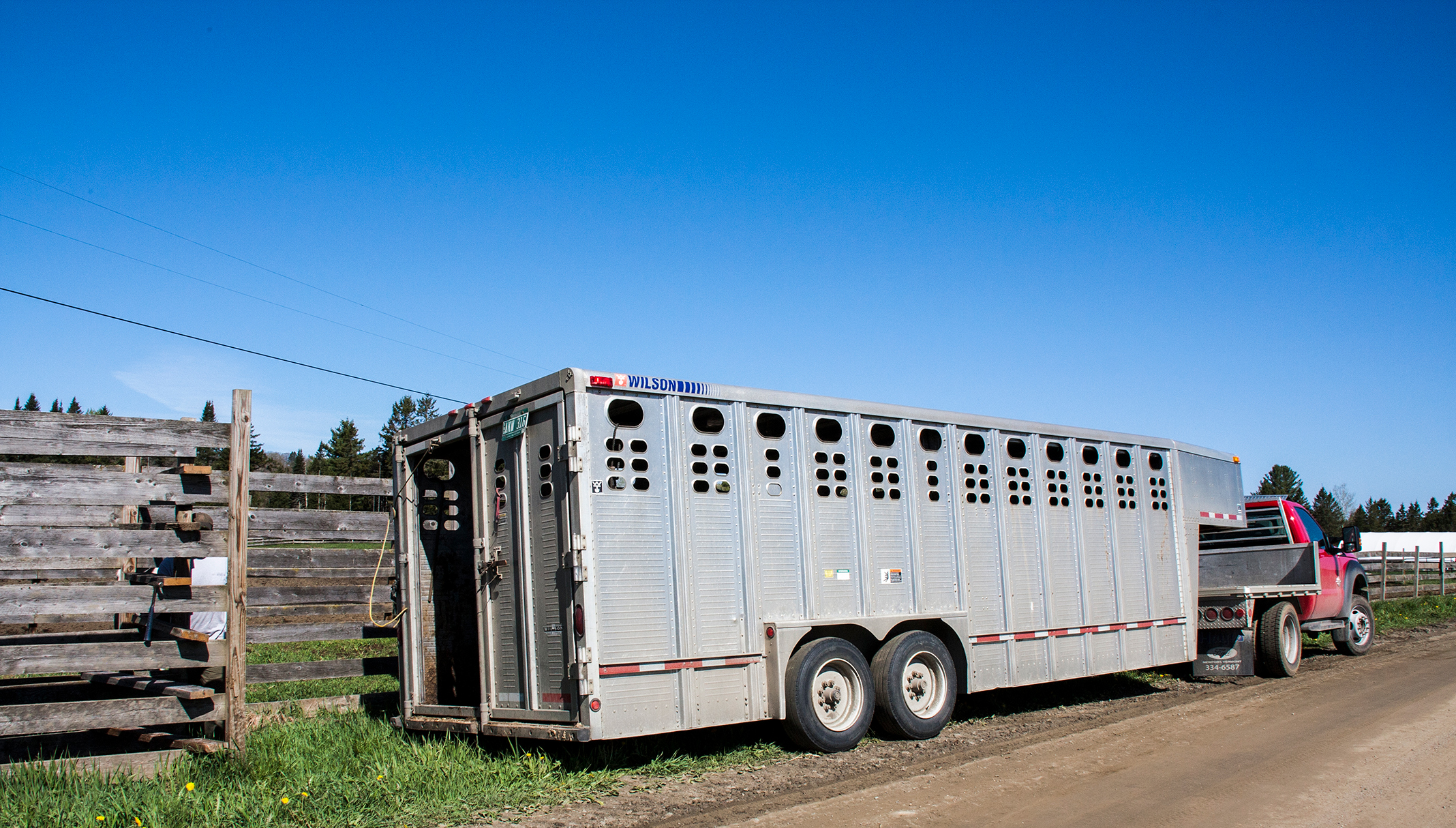
Small slaughterhouses are a crucial part of rural life that permits farms like Snug Valley to exist. If the Nottermanns had to drive their animals four hundred miles to a large facility where the animals were treated like a piece of machinery rather than a living creature, they would not be raising animals for meat.
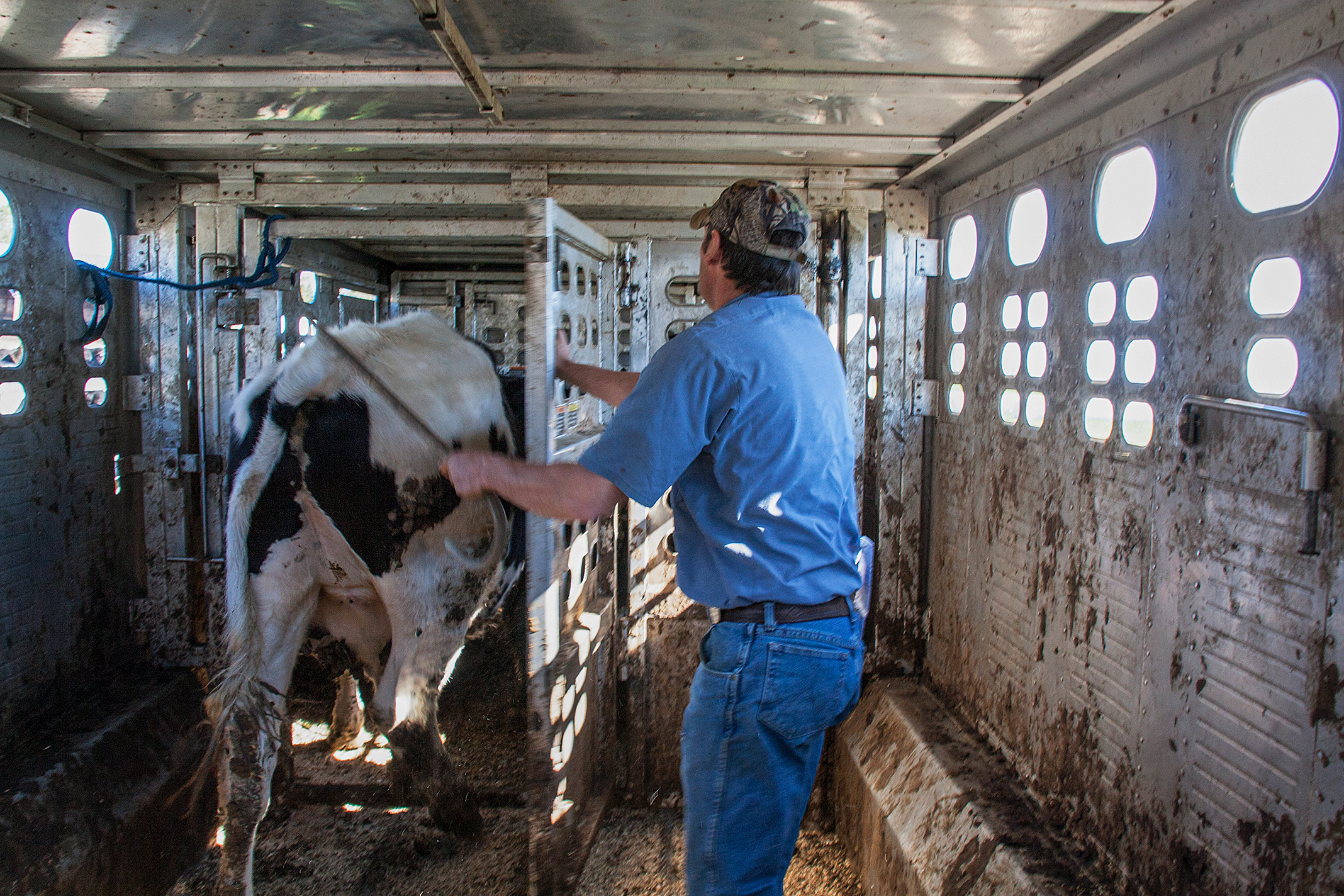
It comforts the Nottermanns to know that the steers they spent two years caring for and raising from baby calves will be treated well in their final minutes. Death comes in the form of a stun gun that inserts a large bolt into the animal’s brain, killing them instantly. After a steer is killed, it is hung by the hind legs to allow all the blood to drain out.
The skin and all internal organs—such as the stomach, heart, liver, and intestines—are removed. Government health officials inspect the meat to make sure the animal was healthy, and the meat is safe for people to eat. The carcass is then cut in two along the length of the spine, and the two halves hang in a refrigerated room for two weeks. This is called "dry-aging." People find that meat that has been hung, or aged, before being packaged tastes better and is more tender.
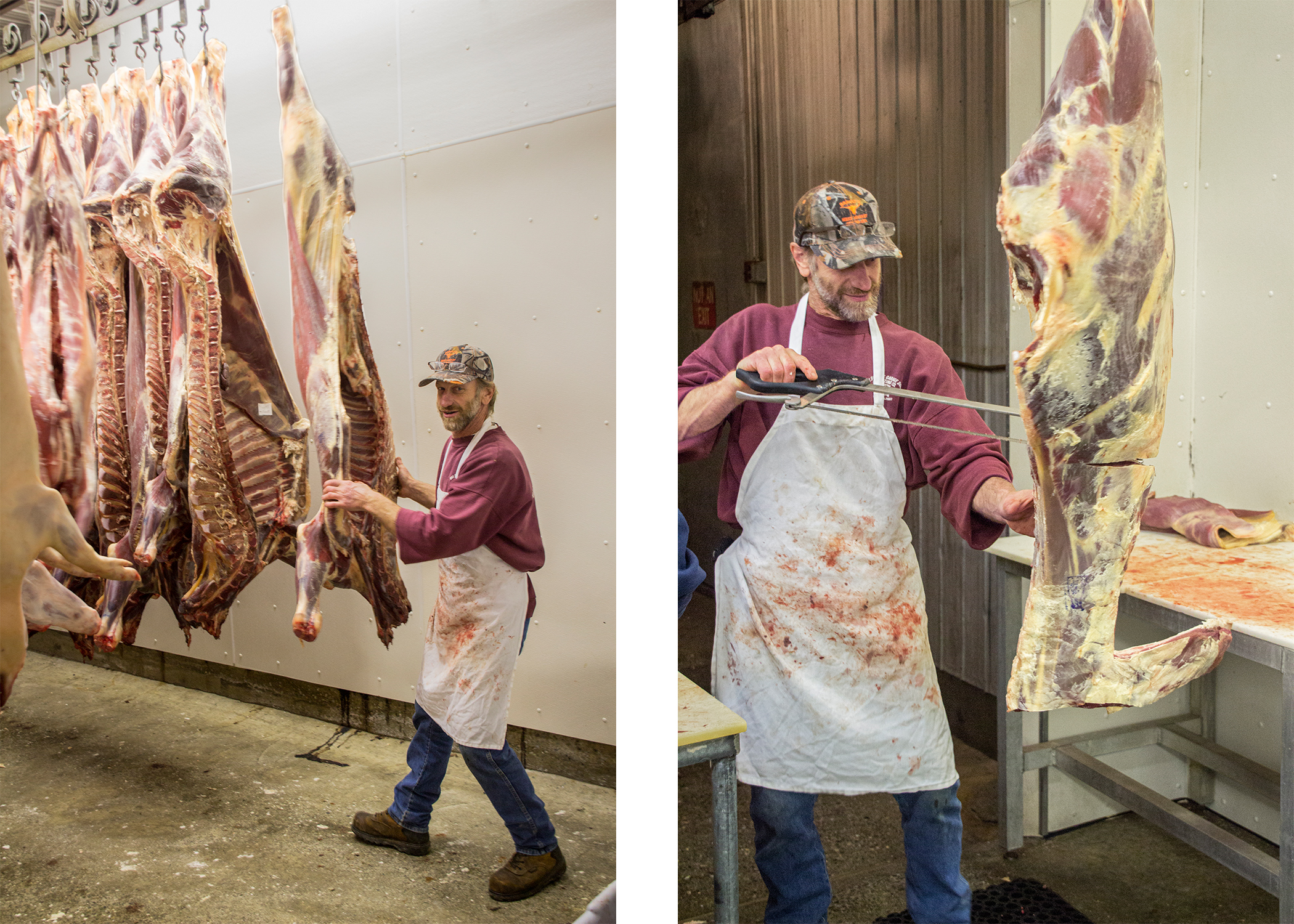
These halves, or “sides,” of meat are moved from the aging room along a track in the ceiling to the cutting room.
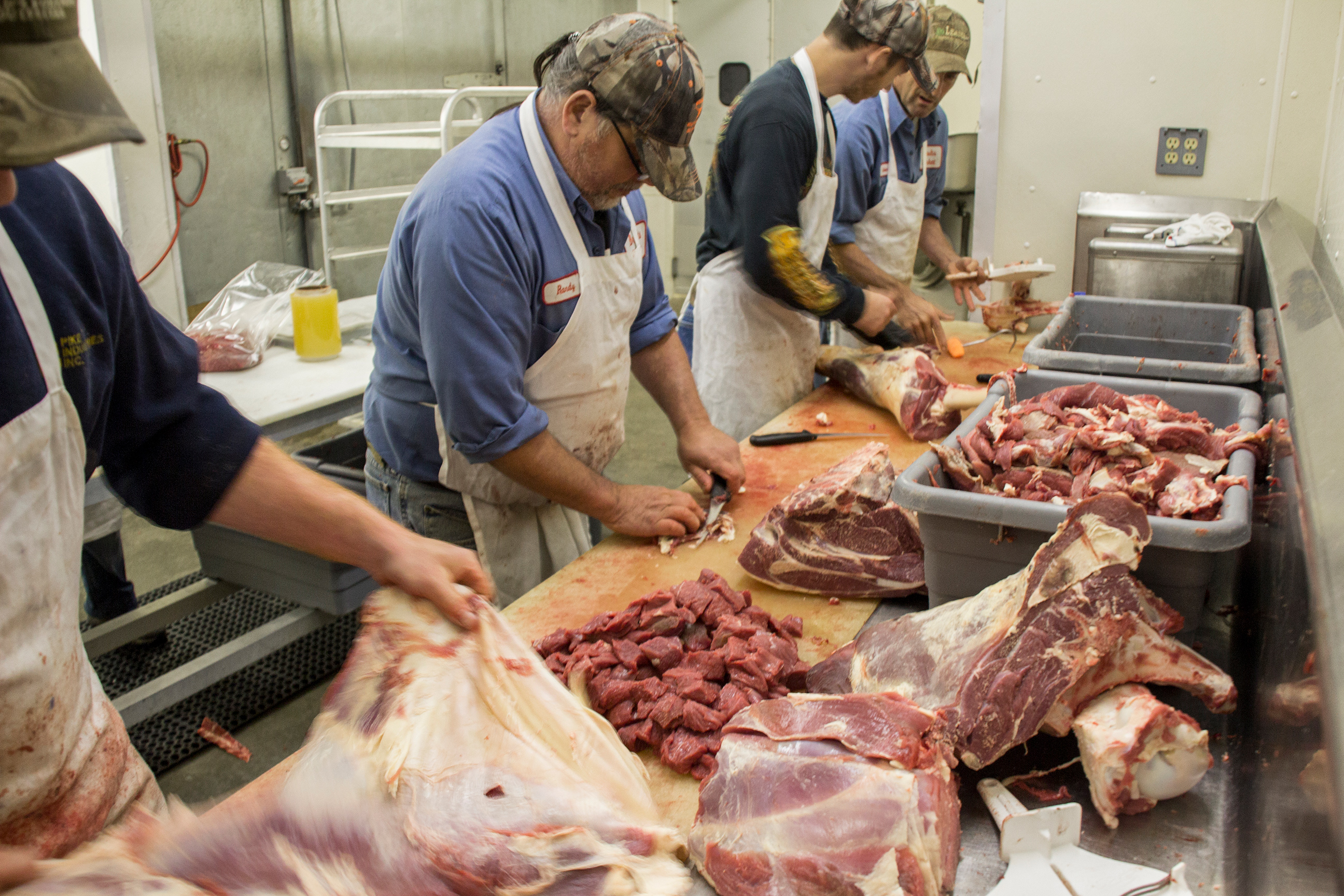
Here, the workers use saws and knives to cut the meat into sizes ready to be packaged. Some parts are cut into steaks, roasts, briskets, tenderloin, and stew meat. The rest of the meat is ground into hamburger.
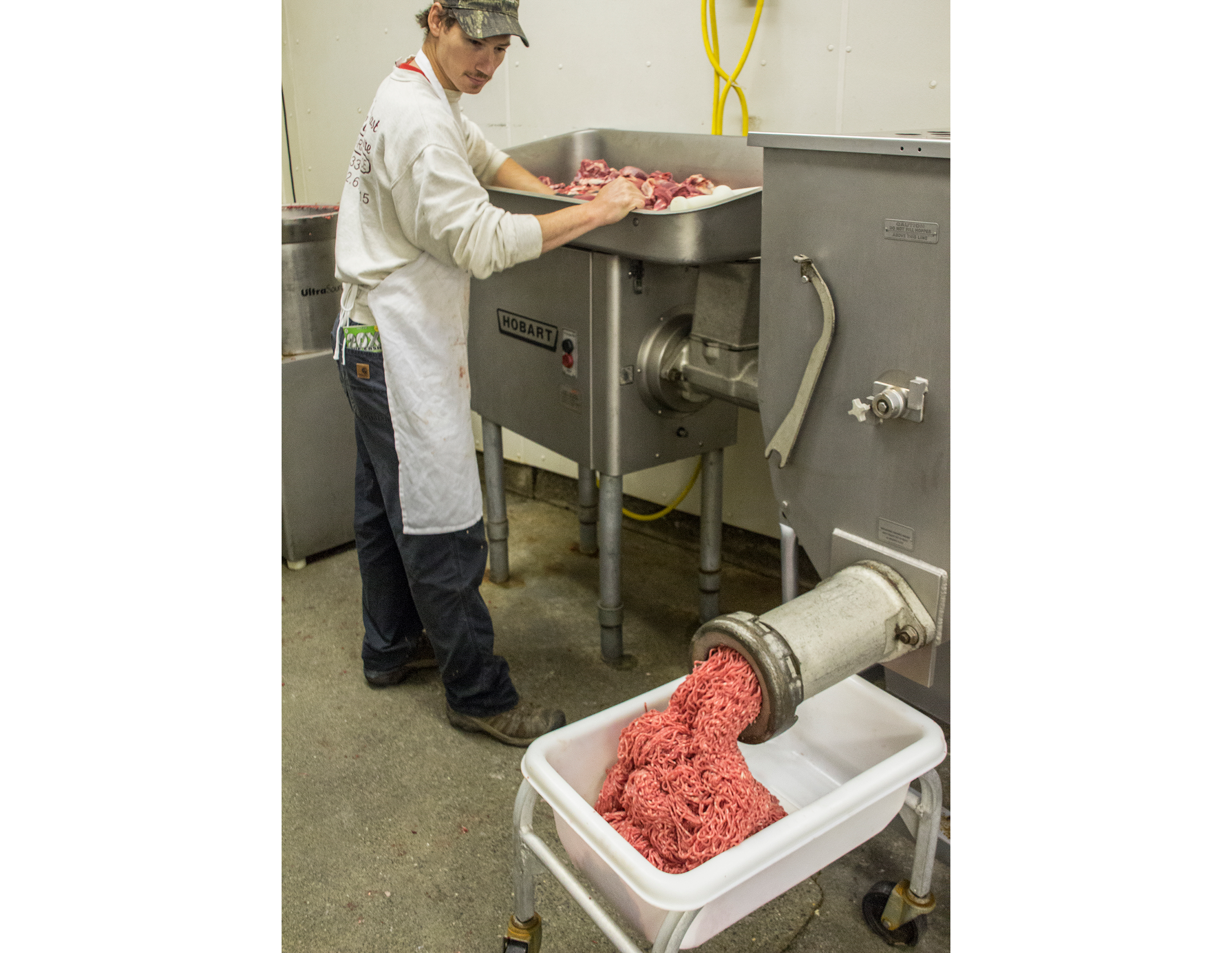
To make hamburger, chunks of meat are fed into a special machine where the meat is ground and chopped into very fine pieces. It is then pushed out (or extruded) through a grill with small holes, which gives the meat the look of long strands of spaghetti.
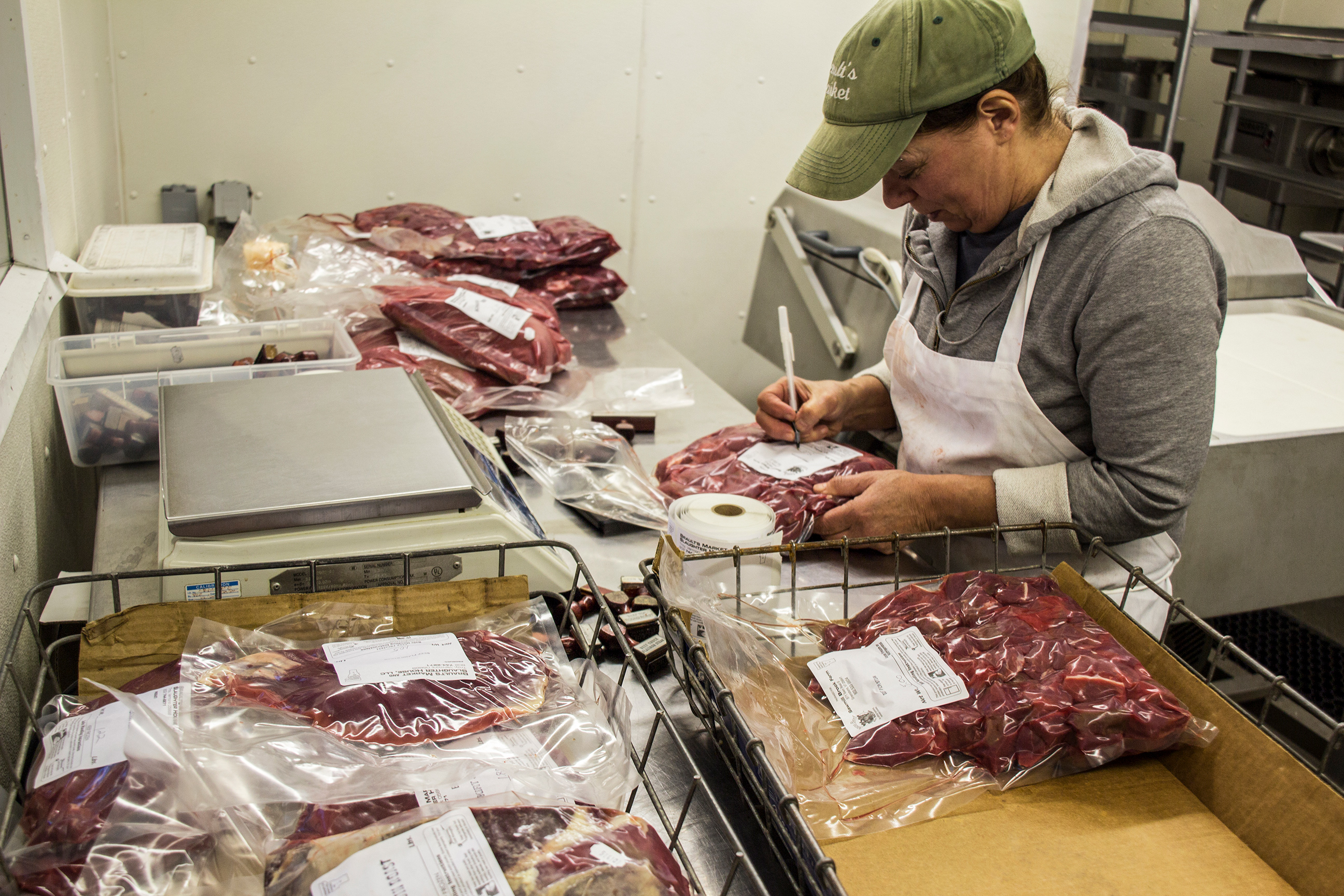
All the different cuts of meat are vacuum packed and then frozen. Vacuum packing eliminates air so that the meat keeps the same texture even after being frozen.
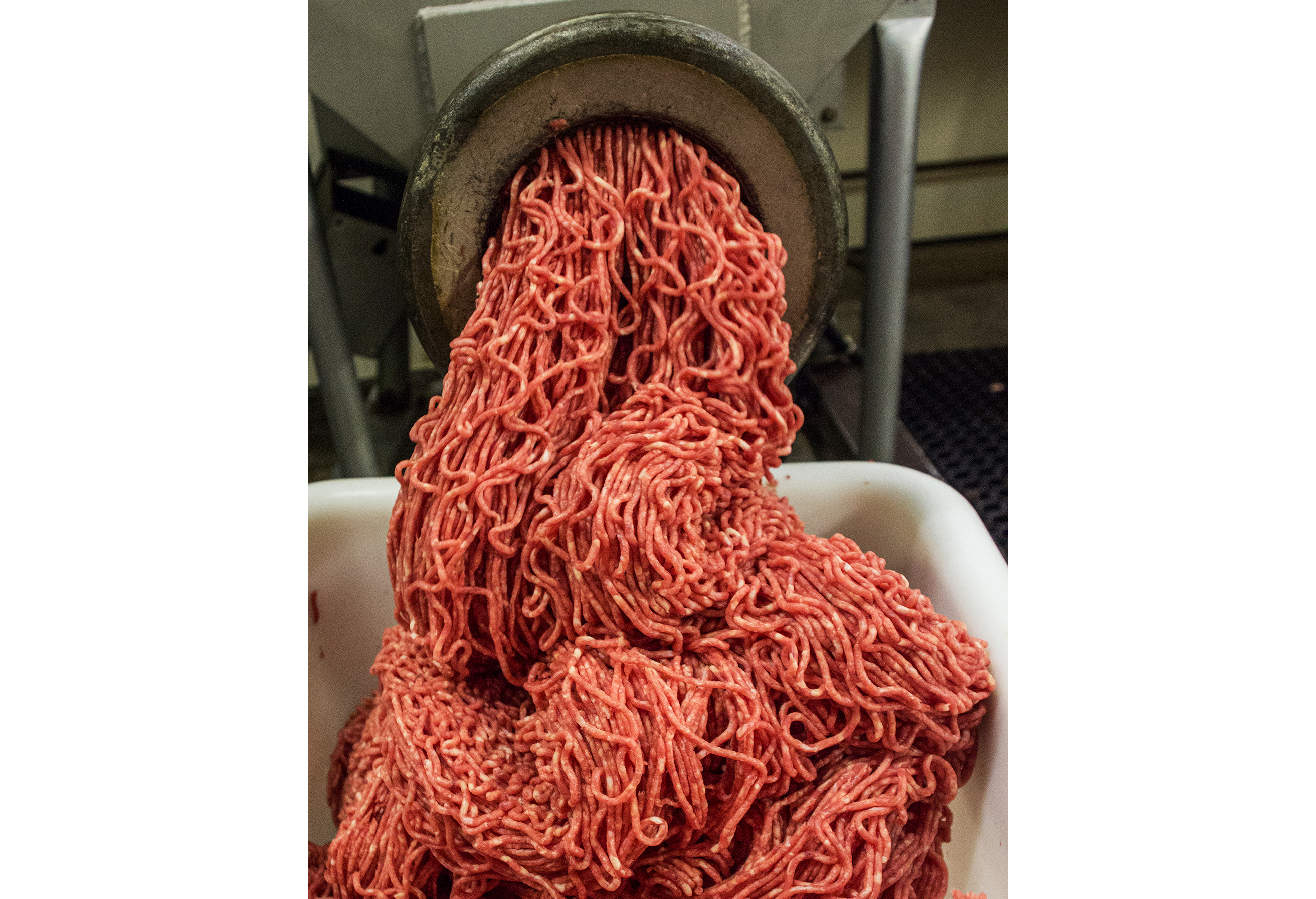
Lima Bean weighed 1,590 pounds at his death. If all his usable meat had been ground into hamburgers and made into quarter-pound patties, that would have been over 2,000 patties. Even though one steer can feed a lot of people, many steers are slaughtered to feed Americans the 13 billion hamburgers they eat every year.
Lima Bean’s hide was sent to a tannery to be turned into leather, and the non-edible parts of his body such as his bones and organs were sent to a rendering plant. Rendering plants collect the non-edible parts of animals from slaughterhouses, expired meat from supermarkets, and euthanized cats and dogs from animal shelters and turn them into ingredients found in soap, cosmetics, shampoos, detergents, fertilizer, and biofuel. Rendered material is also used to manufacture pet food and feed for animals in factory farms.
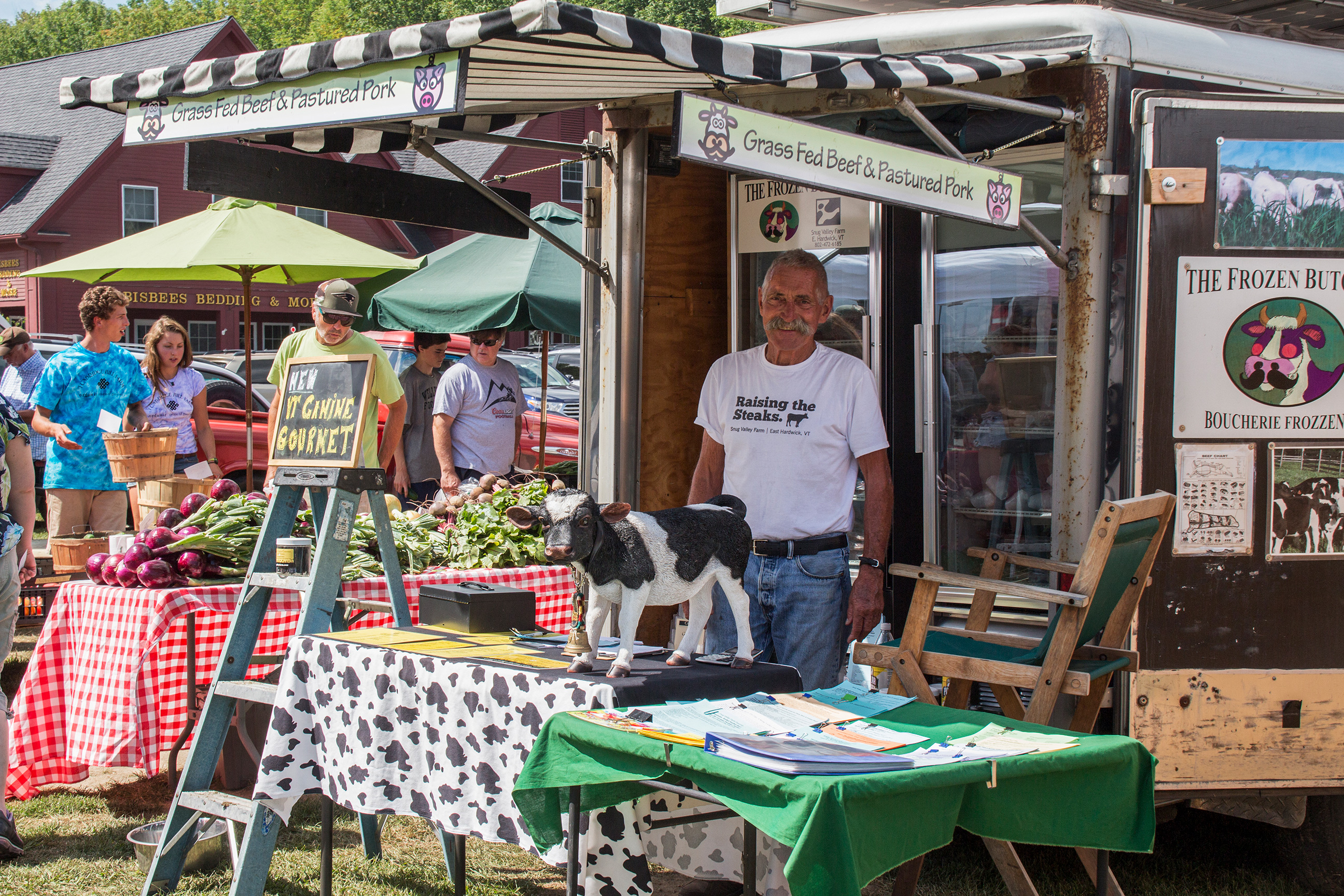
Nancy, Helm, and Ben started out selling their beef and pork at farmers' markets all over Vermont.
They have expanded to restaurants, farm stands, and food co-ops throughout New England as well as small grocery stores that focus on locally raised meat. People of all ages are grateful for healthy and flavorful meat raised in a way that give the animal a good life.
Lima Bean’s body will go on to nourish and feed many families; the cycle of life continues.
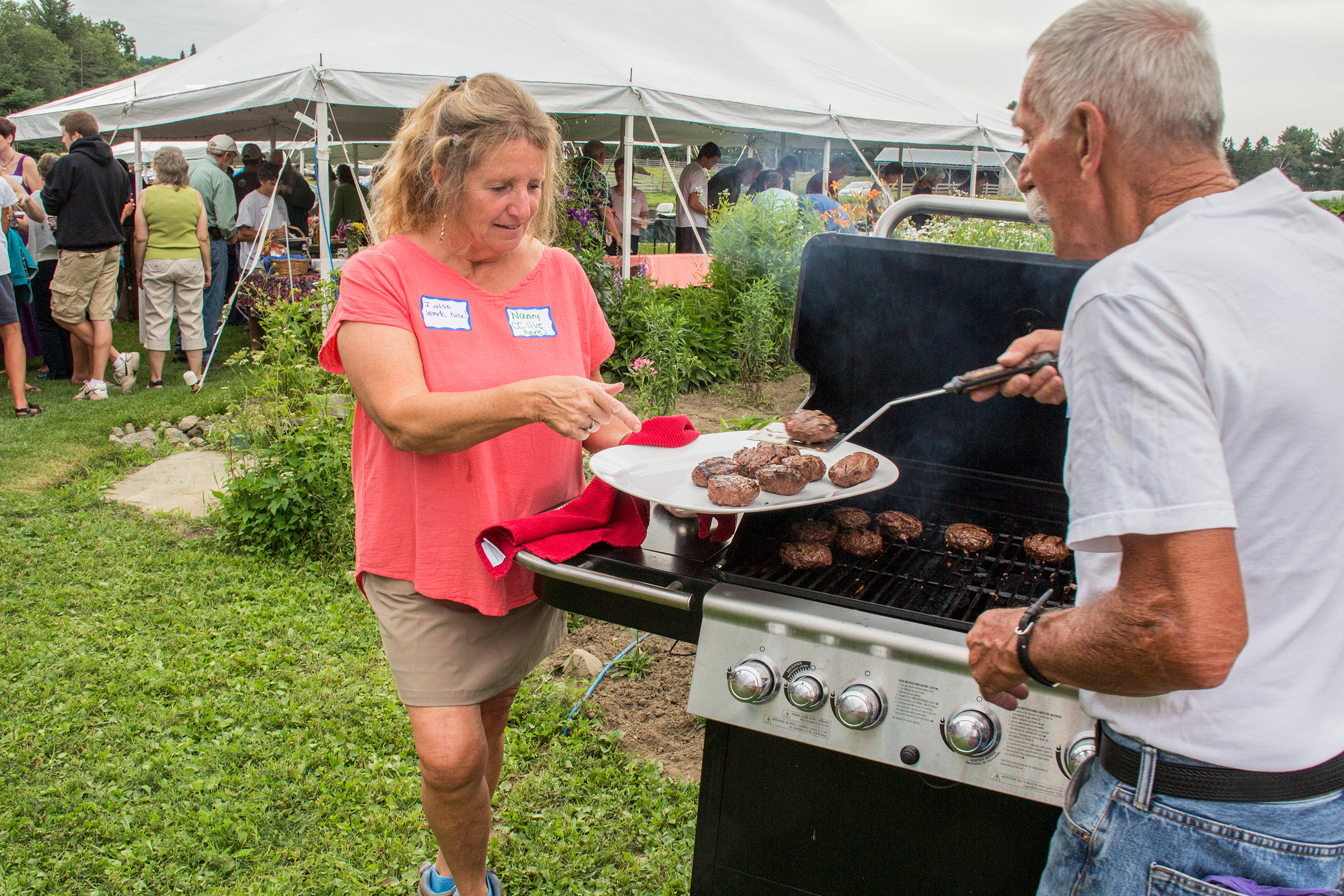
Every summer, the Nottermanns throw a big Hamburger Bash for all their friends and neighbors to celebrate and honor the animals on their farm. It is one of their ways of giving thanks.
While the steers’ lives might be short, they live as cows should live—with a group of their buddies, outdoors in fresh air, eating the grasses their body was designed to eat. At the end, they have a quick and painless death.
But the story continues because farmers like the Nottermanns are continually seeking to improve life on their farm. In recent years, they have made two important changes. First, they reconsidered the breed of cattle they wanted to raise.
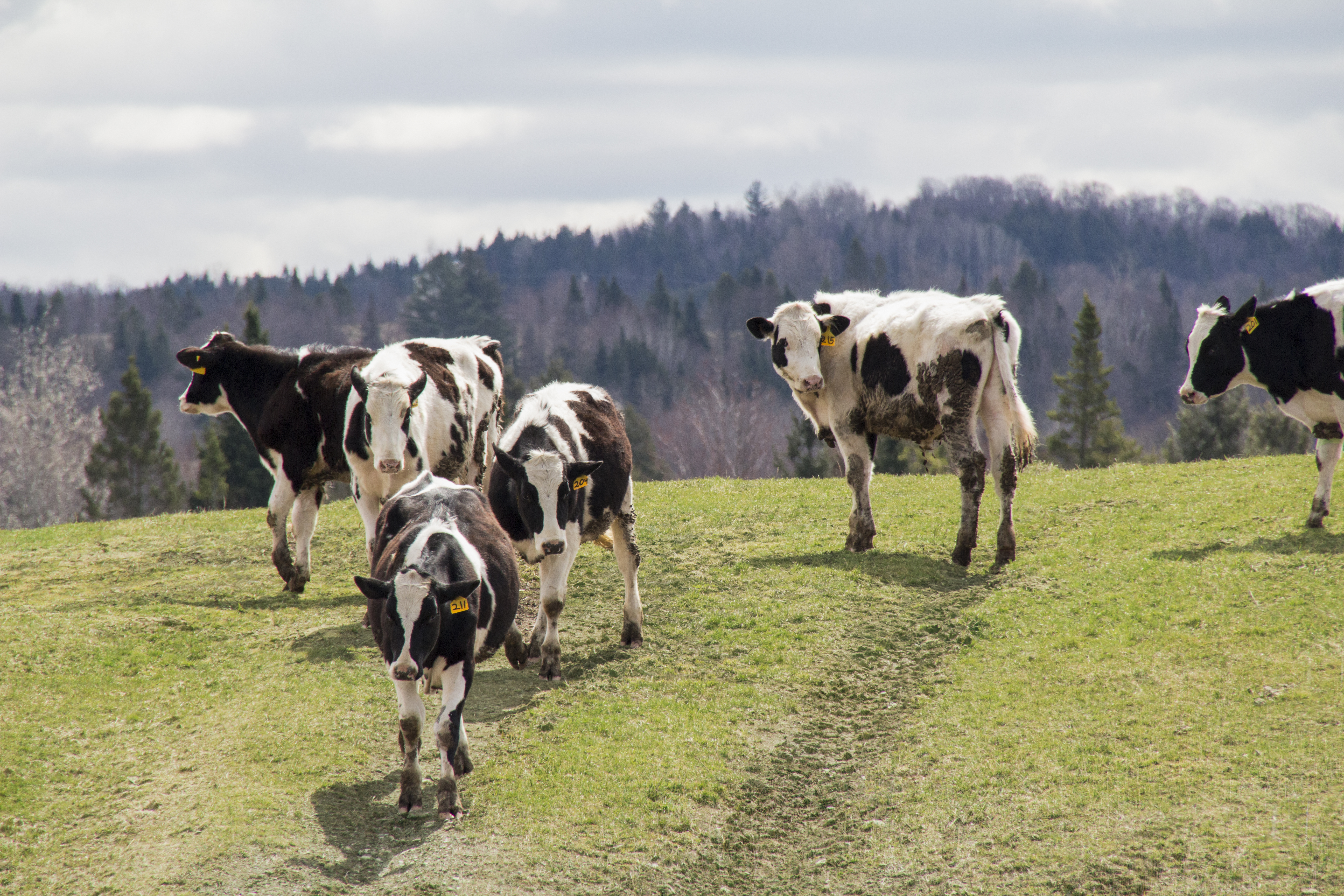
Snug Valley Farm was originally a dairy farm milking Holstein cows. After twenty-five years, the Nottermanns decided to stop dairy farming and start raising their Holsteins for meat. This worked well for many years, but over time they began to wonder if there might be a better option for raising meat. Holsteins are primarily bred to be dairy animals. This means that while they produce a large amount of milk every day, only about thirty percent of a Holstein’s weight is useable meat. The rest is bones, organs, and hide.
The Nottermanns began to experiment with raising Angus Beef, a solid-color breed originally from Scotland that produces high-quality meat on a grass diet. Over sixty percent of an Angus’s weight is usable meat. This is more resource-efficient and produces more income for the farmer. Using the same amount of grazing land, almost twice as much meat can be produced than with Holsteins.
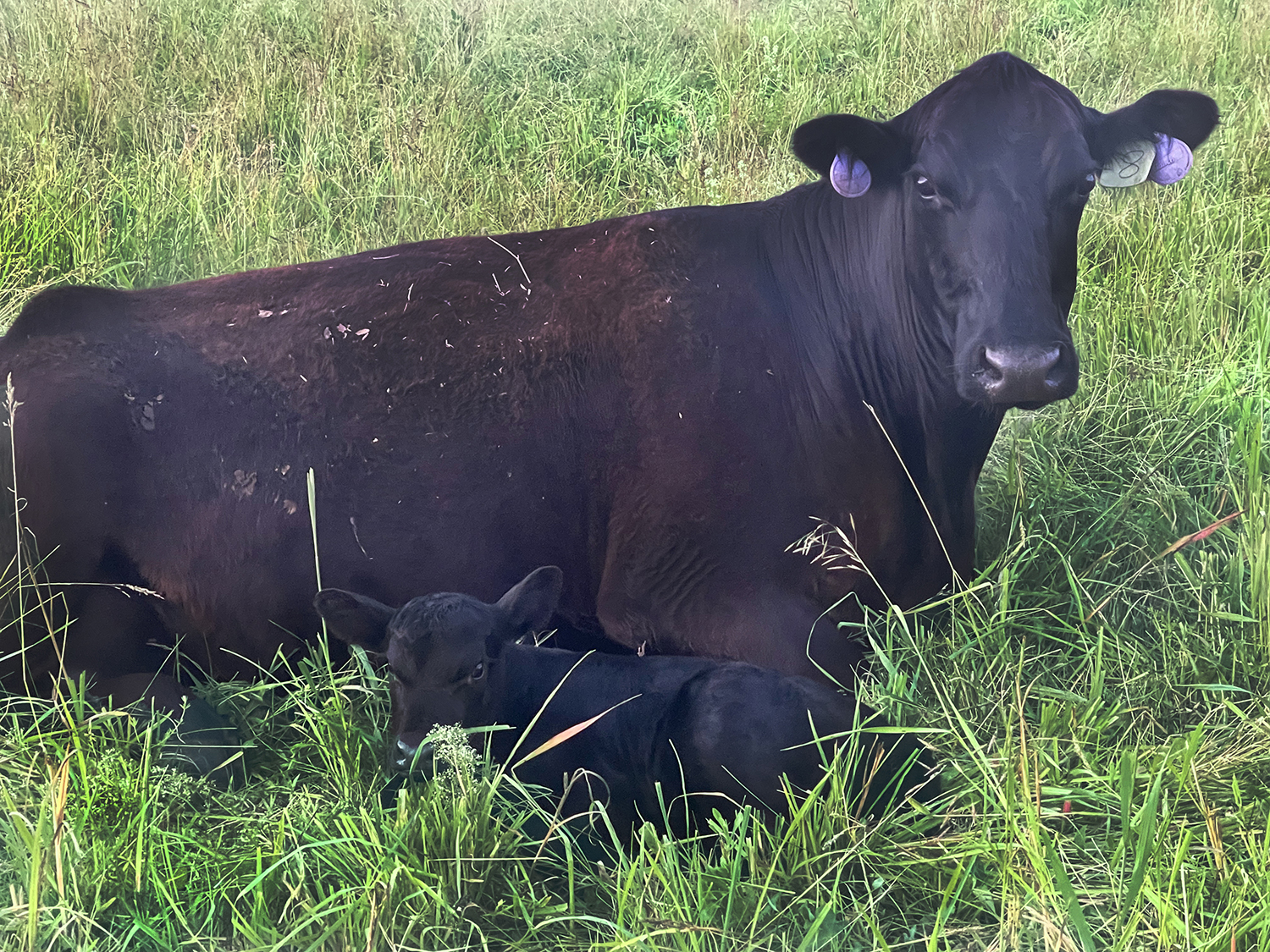
Additionally, dairy calves are separated from their mothers shortly after birth, which is stressful on both the calves and the mothers. Snug Valley Farm received their dairy calves at only two days old. At this early age, the calves’ immune systems are fragile, and great care is needed to ensure they grow up healthy. Further, Holsteins grow horns that need to be removed for the safety of the herd and the farmers, but some believe that removing the horn buds is painful. It is therefore simpler, and possibly kinder, to work with a breed that naturally has no horns.
The Nottermanns have found a farm that raises Angus cattle where the calves are able to stay with their mothers and nurse for two months until they are ready to start eating grass on their own. This time with their mothers gives them a healthy start in life, both physically and emotionally. As much as the Nottermanns miss connecting with newborn Holstein calves, switching to raising Angus calves has improved the life of the animals they raise on the farm.
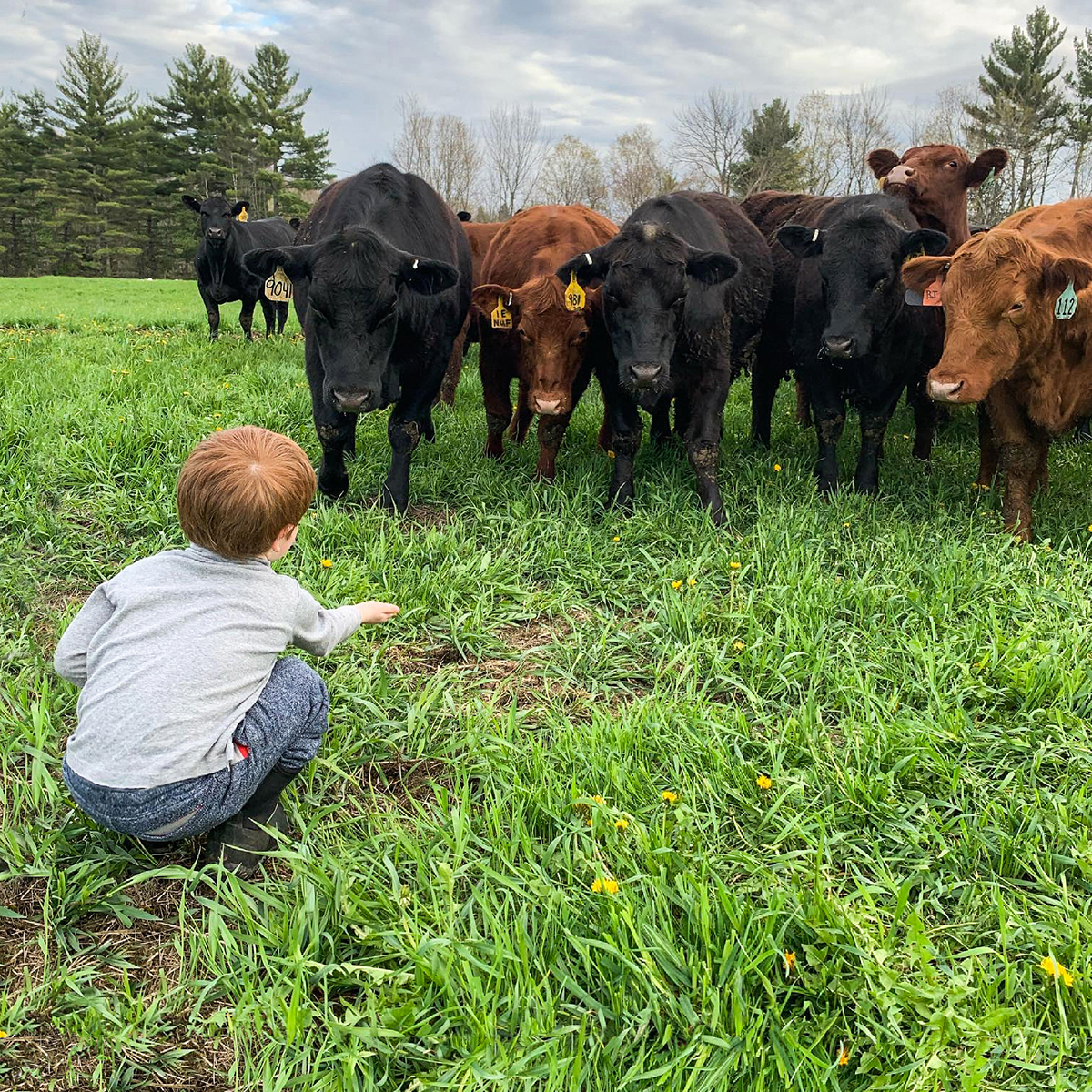
The second joyful change is that a third-generation Nottermann farmer, Fritz, has joined the team in raising beef with kindness.
The cycle of life on the farm continues!
